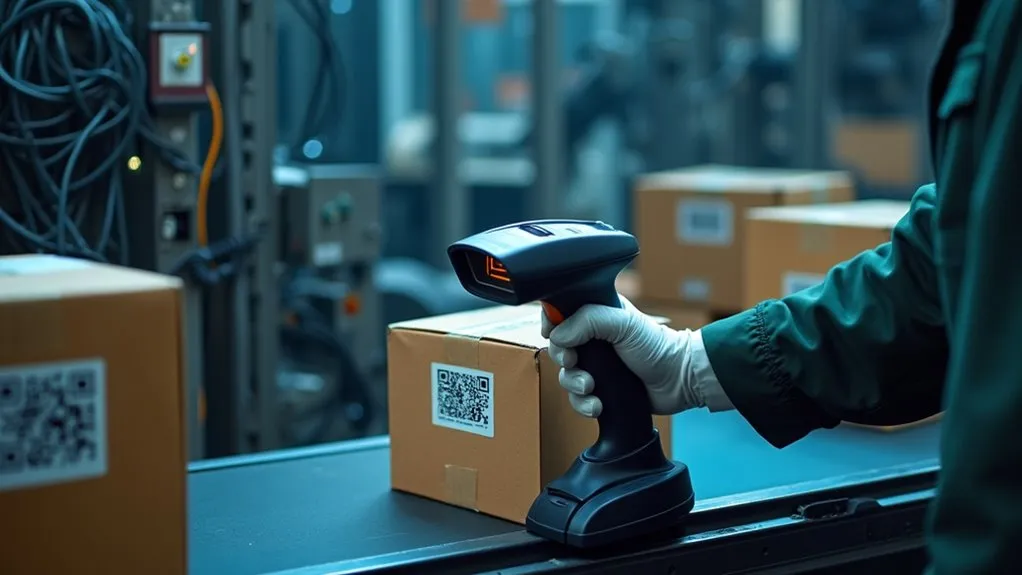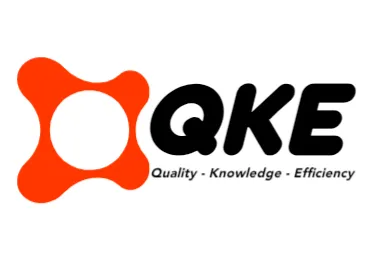Implementing track and trace technology in a business revolutionizes supply chain management with real-time visibility and precision. It enhances transparency, optimizes inventory, and boosts customer loyalty through accurate updates. Key tools like RFID, IoT, and blockchain drive seamless tracking and data analysis. Though challenges like integration and costs arise, strategic planning and scalable solutions mitigate risks. Businesses can transform operations with innovative deployment. Explore further to uncover detailed strategies and transformative insights.
Key Takeaways
- Define clear goals and needs to align track and trace with business objectives.
- Select scalable technology like RFID and cloud platforms for seamless integration.
- Deploy unique identifiers and start incremental scanning for effective implementation.
- Train staff and monitor system performance to ensure user readiness.
- Address challenges with cybersecurity measures and stakeholder engagement strategies.
Benefits of Adopting Track and Trace Systems
The adoption of track and trace systems offers transformative advantages for businesses seeking to optimize their operations and supply chain management. These systems provide real-time visibility into goods movement, enabling swift identification of delays and enhancing transparency across the product lifecycle. This granular control fosters efficiency, streamlines logistics, and sharpens decision-making with precise data.
Moreover, track and trace solutions drive Inventory Optimization by delivering accurate stock level insights, minimizing excess inventory, and cutting storage costs. This precision reduces losses from theft or misplacement, ensuring resources are allocated effectively. Simultaneously, they bolster Customer Loyalty by offering transparency on product journeys and real-time order updates, building trust and improving service quality. Faster issue resolution further solidifies consumer confidence. By integrating such innovative tools, businesses not only enhance operational agility but also position themselves as reliable partners in a competitive market, redefining supply chain excellence. Additionally, these systems ensure regulatory compliance by maintaining detailed records of product handling and movement, safeguarding against legal and safety issues.
Key Technologies Behind Track and Trace Solutions

Businesses leveraging track and trace systems gain remarkable operational advantages, but understanding the underlying mechanisms reveals the true scope of this innovation. At the core, unique identification methods like barcodes, DataMatrix codes, and RFID tags assign distinct markers to items, enabling precise tracking across supply chains. RFID Innovations have transformed data capture with non-line-of-sight scanning, enhancing automation through passive and active tag variants.
Complementing these are advanced data capture tools such as IoT-enabled devices and machine vision cameras, which streamline real-time monitoring. Sensor Developments play a pivotal role, with IoT sensors tracking environmental conditions like temperature and humidity, while GPS ensures accurate location data. Integration platforms, including cloud databases and blockchain, secure and analyze this data, offering actionable insights via AI-driven analytics. Together, these technologies form a robust framework, delivering unparalleled visibility and control over assets in dynamic, interconnected ecosystems.
Steps to Successfully Deploy Track and Trace Tools
Countless organizations stand to revolutionize their operations by deploying track and trace tools, yet success hinges on a structured approach to implementation. A meticulous process, divided into distinct Planning Phases, ensures alignment with goals like efficiency and compliance. Organizations must define clear objectives, select scalable technology, and develop a phased deployment strategy, starting small before scaling up. Equally critical are robust Training Programs to equip staff with necessary skills for system operation and data management.
To visualize the deployment journey, consider the following structured breakdown:
| Phase | Key Action | Focus Area |
|---|---|---|
| Planning | Define goals and needs | Vision & compliance |
| Technology Selection | Choose identifiers and software | Scalability & integration |
| Deployment | Assign unique IDs, start scanning | Incremental implementation |
| Data Management | Validate and secure data | Accuracy & cybersecurity |
| Optimization | Train staff, monitor performance | User readiness & evaluation |
This innovative framework drives precision and long-term success in track and trace adoption.
Overcoming Challenges in Track and Trace Implementation

How can organizations navigate the intricate hurdles of implementing track and trace technology? The path to seamless adoption demands strategic foresight to address integration, security, and operational complexities. By dissecting these barriers with precision, businesses can unlock innovative solutions that ensure traceability without compromising efficiency.
Navigating track and trace technology hurdles requires strategic foresight to tackle integration and security challenges, ensuring traceability without sacrificing operational efficiency.
Key strategies to overcome challenges include:
- Overcome Resistance: Engage stakeholders through transparent communication and comprehensive training to dispel mistrust and foster acceptance of new systems.
- Manage Costs: Prioritize scalable solutions and phased rollouts to distribute financial burdens, especially for SMEs facing high setup expenses.
- Enhance Interoperability: Invest in standardized protocols to bridge data silos and ensure compatibility across diverse supply chain networks.
- Secure Data: Deploy robust cybersecurity measures to protect sensitive information and maintain trust in track and trace systems.
Through analytical planning and adaptive innovation, organizations can transform these obstacles into opportunities for operational excellence and sustained growth.

 Tiếng Việt
Tiếng Việt 日本語
日本語 中文 (中国)
中文 (中国) 한국어
한국어
